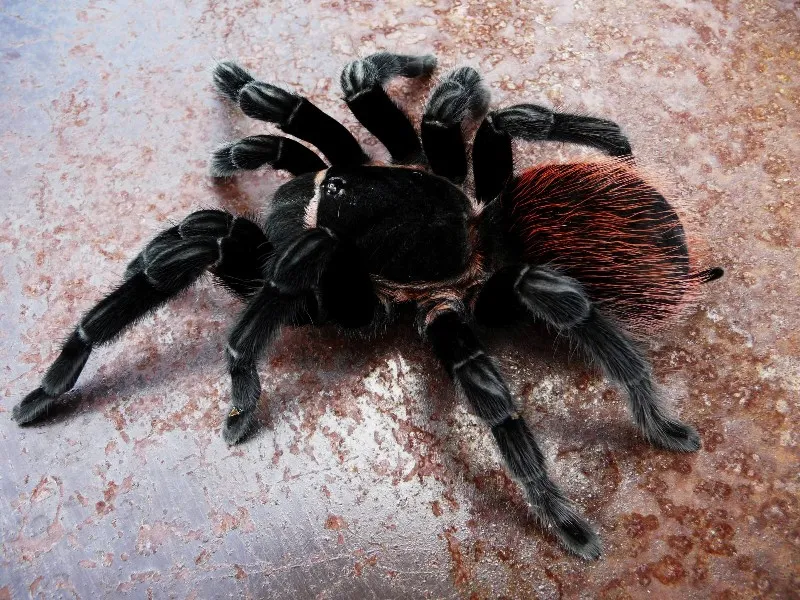What is a B Vagans Tarantula (Mexican Red Rump)
The B vagans, commonly known as the Mexican Red Rump tarantula, is a popular and fascinating species among tarantula enthusiasts. These spiders are native to Central America, including Mexico and Costa Rica, and are renowned for their relatively docile temperament and striking appearance. They are a terrestrial species, meaning they primarily live on the ground, and are relatively easy to care for, making them a great choice for both novice and experienced tarantula keepers. Understanding their characteristics, habitat, and behavior is key to providing optimal care and appreciating these amazing creatures. These spiders typically exhibit a vibrant coloration, especially as juveniles, with reddish hairs on their abdomen, which becomes more pronounced as they mature, giving them their common name. Their size, lifespan, and overall demeanor make them an intriguing addition to any collection, offering a unique window into the arachnid world.
Appearance and Characteristics
The B vagans tarantula is a medium-sized spider, with a leg span typically ranging from 4 to 6 inches. Their bodies are covered in a dense coat of hairs, which can vary in color from dark brown to black, with the defining feature being the reddish-orange hairs on their abdomen. These urticating hairs are used as a defense mechanism. Their legs are robust, allowing them to move quickly across the ground. The cephalothorax (the fused head and chest) is typically a darker shade than the legs and abdomen. The overall appearance is quite striking, and the contrast between the dark body and the vibrant red hairs makes them visually appealing. As they mature, the coloration intensifies, adding to their beauty. Females tend to be slightly larger and have a longer lifespan than males. The fangs, or chelicerae, are prominent and used for capturing and subduing prey.
Size and Lifespan
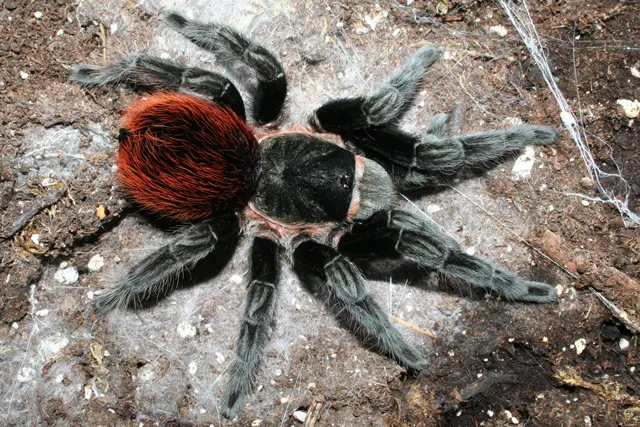
As mentioned, the B vagans tarantula usually reaches a leg span of between 4 and 6 inches. The size can vary slightly depending on individual genetics and environmental conditions, such as the availability of food and the temperature of their habitat. The lifespan of these tarantulas is significantly influenced by their sex. Females have a much longer lifespan, often living for 10 to 15 years or even longer under optimal care. Males, on the other hand, have a considerably shorter lifespan, typically only living for a few years after reaching maturity. This difference in longevity is a common trait among tarantula species, where the male’s primary role is to mate, and their life cycle is geared towards reproduction rather than long-term survival. The size and lifespan of B vagans make them a relatively manageable pet for those interested in a long-term commitment.
Habitat and Natural Environment
In their natural habitat, B vagans tarantulas are found in a variety of environments, including grasslands, scrublands, and open woodlands. They are primarily terrestrial, meaning they live on the ground, often burrowing or utilizing existing burrows. The ideal habitat for these tarantulas is warm and humid, with a substrate that allows them to burrow. They are most active during the night, when they emerge from their burrows to hunt. Their native environments provide them with cover from predators and suitable conditions for hunting and mating. The natural environment is critical for understanding their needs in captivity. Replicating the appropriate temperature, humidity, and substrate conditions will provide these tarantulas with the best chance to thrive in a captive setting.
Native Region and Geographic Distribution
The B vagans tarantula is native to Central America, with its primary distribution spanning across Mexico and Costa Rica. Within these regions, they inhabit areas that provide suitable conditions for their survival, including warm temperatures, moderate humidity, and appropriate substrates for burrowing. Their geographic distribution is an important factor in understanding their specific needs. The Mexican Red Rump tarantula thrives in these environments, showcasing its adaptability and resilience. The range of the B vagans is relatively broad within Central America, suggesting its ability to adjust to varying conditions. Knowledge of their native habitat is vital for creating a successful captive environment that mimics the natural conditions these spiders have evolved to thrive in.
Amazing Facts About B Vagans Tarantulas
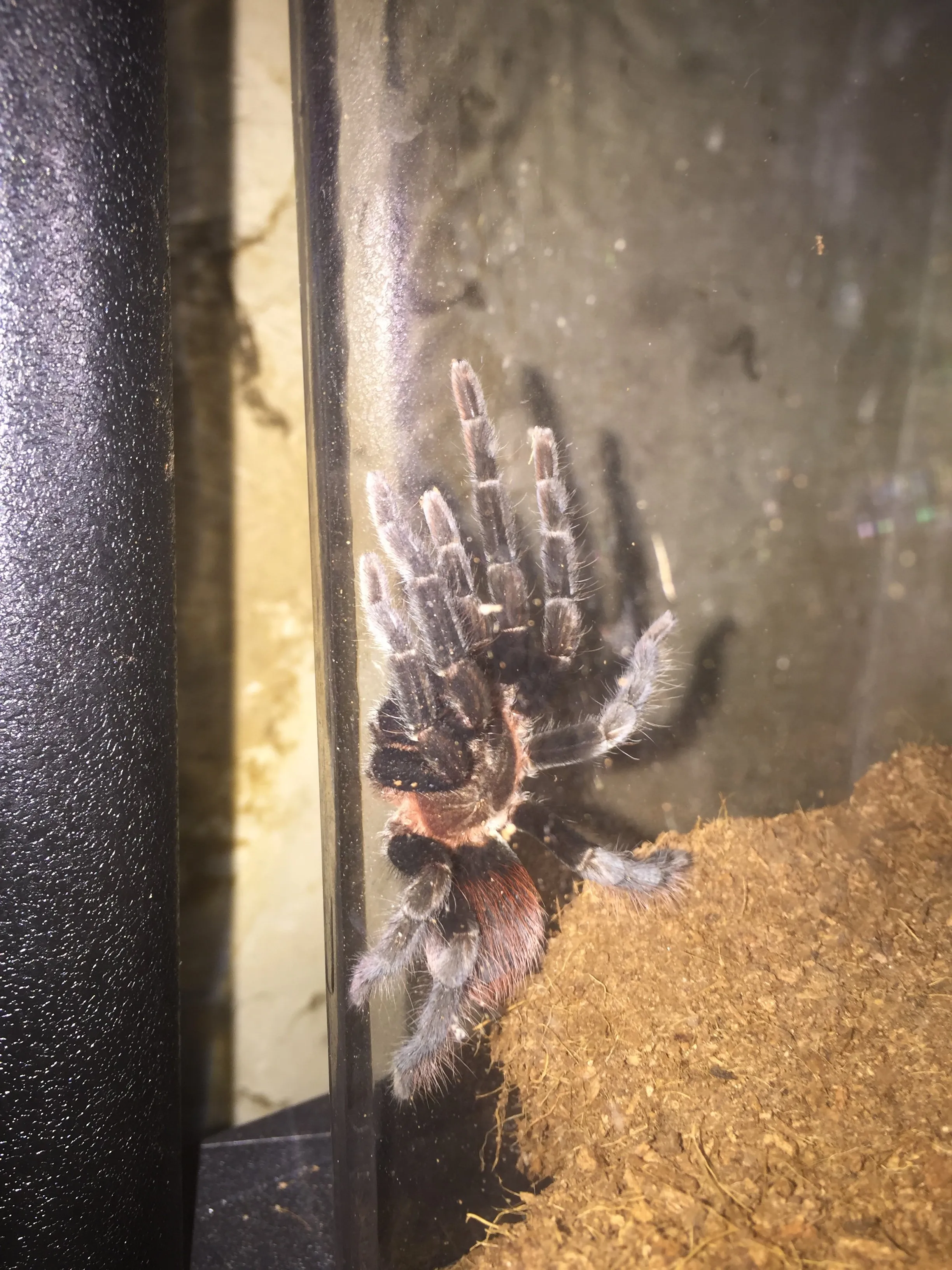
Fact 1: Unique Defensive Mechanism
One of the most fascinating aspects of the B vagans tarantula is its unique defensive mechanism. These spiders are equipped with urticating hairs located on their abdomen. When threatened, they use their hind legs to flick these hairs toward the perceived threat. These hairs are barbed and can cause intense irritation if they come into contact with the skin or eyes. This defense is a common characteristic among New World tarantulas and serves as a deterrent to predators. This mechanism has evolved to protect them from various threats in their natural environment, making them less vulnerable to attacks from birds, mammals, and other predators. This defensive strategy adds to the intriguing nature of these spiders, showcasing an adaptation for survival.
Fact 2: Stunning Coloration
The striking coloration of the B vagans tarantula is another captivating feature. As mentioned earlier, their most distinctive characteristic is the vibrant red hairs on their abdomen, which contrast beautifully with their darker bodies and legs. The intensity of the red coloration can vary depending on the individual tarantula and its age, with the color becoming more pronounced as they mature. This coloration serves not only as an aesthetic appeal but potentially also as a warning signal, indicating their defensive capabilities to potential predators. This vivid display makes them highly sought after in the pet trade. The combination of dark and bright colors creates an impressive visual spectacle, adding to their allure for enthusiasts. The coloration is a testament to the beauty found in the natural world, making the B vagans tarantula a striking addition to any collection.
Fact 3: Nocturnal Habits
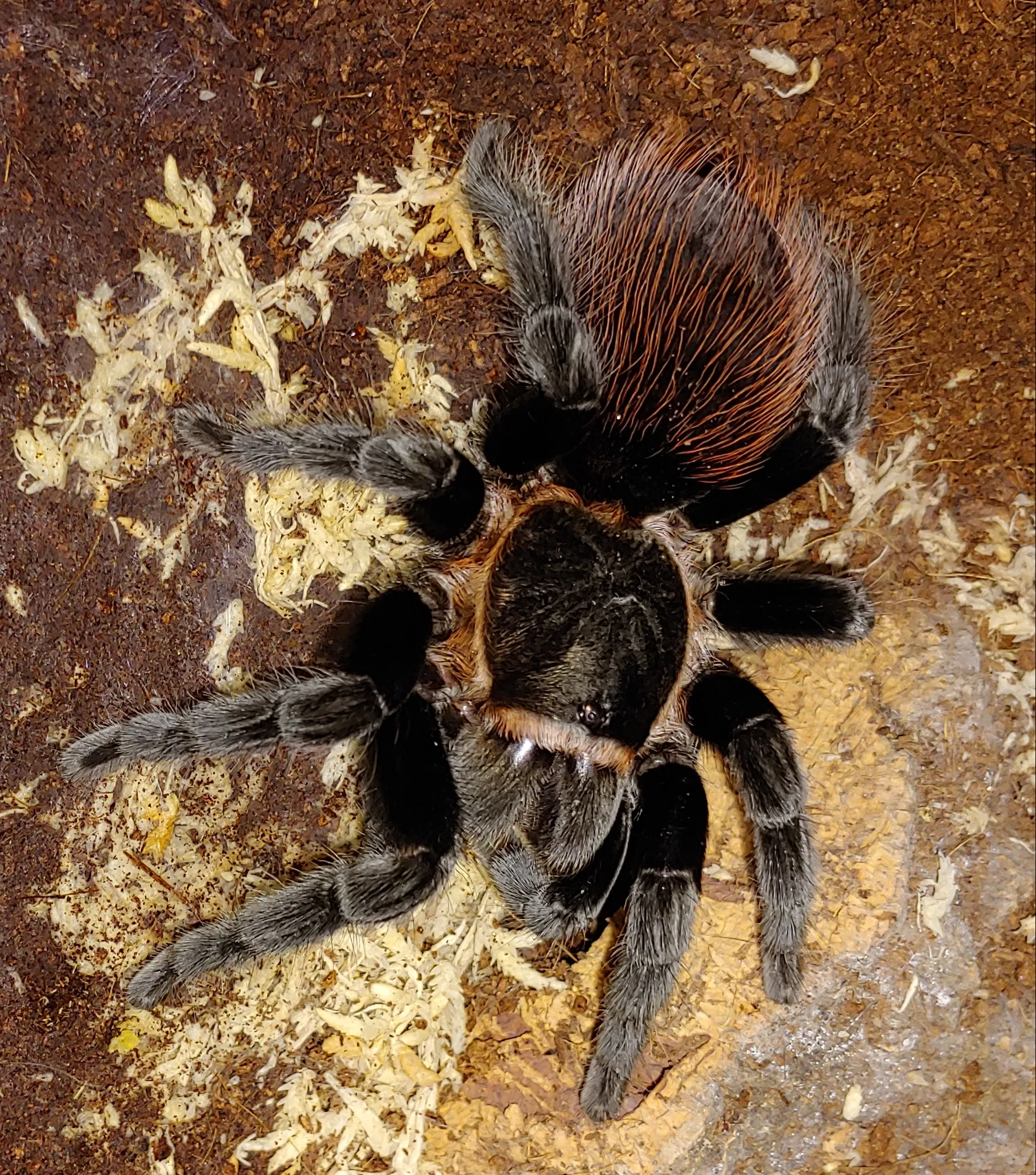
The B vagans tarantula is primarily nocturnal, which means they are most active during the night. This behavior is a survival strategy, as it allows them to avoid the heat of the day and the attention of diurnal predators. During the day, they typically remain in their burrows or under cover, conserving energy. This nocturnal behavior also influences their hunting habits, as they emerge at night to hunt for prey. Their nocturnal lifestyle makes them fascinating to observe in captivity. This adaptation highlights their ability to thrive in varying environmental conditions and is critical to understanding their behavior in a captive setting. Providing a habitat that caters to their nocturnal nature will enable a happy and healthy B vagans tarantula.
Fact 4: Molting Process
The molting process is a vital aspect of the B vagans tarantula’s life cycle. Like all tarantulas, they shed their exoskeleton to grow. This process involves the spider creating a new, larger exoskeleton underneath its current one. During molting, the tarantula becomes vulnerable, as its new exoskeleton is soft and fragile. They typically lie on their backs during this process, which can take several hours or even a day. After molting, the tarantula will be larger and may have brighter colors. Molting frequency depends on the tarantula’s age and how often it eats. This process is essential for growth and renewal and is a remarkable display of nature’s design. Understanding the molting process is critical for providing proper care, ensuring a safe and stress-free environment for the tarantula during this vulnerable time.
Fact 5: Venom and Toxicity
The B vagans tarantula, like all tarantulas, possesses venom, which is used to subdue their prey. However, their venom is considered relatively mild to humans. While a bite from a B vagans tarantula can be painful, similar to a bee sting, it is generally not life-threatening. The venom’s primary purpose is to paralyze small insects and other prey. The severity of the reaction can vary depending on the individual and the amount of venom injected. Furthermore, the urticating hairs pose a greater risk to humans than their bite, causing irritation and discomfort. It is always best to avoid handling them unnecessarily and to be cautious to prevent a bite or irritation from the hairs. Medical attention is usually not required after a bite unless there is an allergic reaction.
Fact 6: Feeding Habits
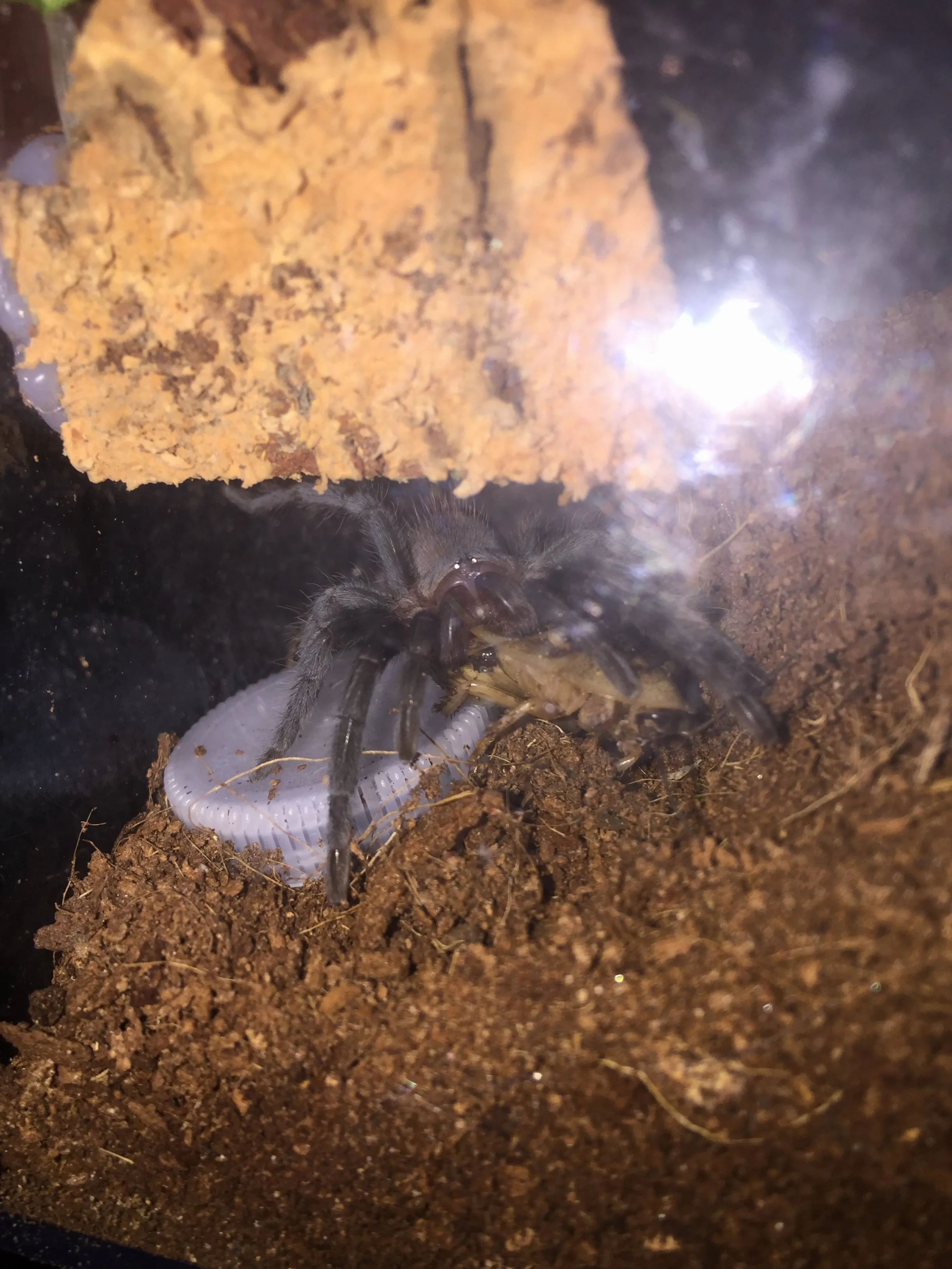
The B vagans tarantula is a carnivore, and its diet primarily consists of insects, such as crickets, roaches, and mealworms. They are opportunistic hunters and will eat anything that moves and they can overpower. In the wild, they hunt small invertebrates and sometimes small vertebrates. In captivity, their feeding habits are easy to manage; they typically eat 1-2 times per week, depending on their size and age. Overfeeding should be avoided as it can lead to health problems. It’s important to remove uneaten food to prevent mold and mites from developing in their enclosure. The tarantula’s feeding habits are an integral part of their care. Offering a varied diet is essential for their overall health and well-being. Providing a steady supply of insects ensures they are able to thrive.
Fact 7: Common Behavior
B vagans tarantulas are known for their relatively docile behavior, which makes them a popular choice for beginner tarantula keepers. However, their behavior can vary depending on the individual tarantula and its environment. They are often observed hiding in their burrows or under cover during the day. They will become more active and visible at night when hunting. They can be skittish, and they may flick their urticating hairs when threatened. Careful observation of their behavior is key to understanding their needs and providing a suitable habitat. Handling should be minimized as it can cause stress. It is important to handle these tarantulas with patience and respect.
Caring for Your B Vagans Tarantula
Creating the Ideal Habitat
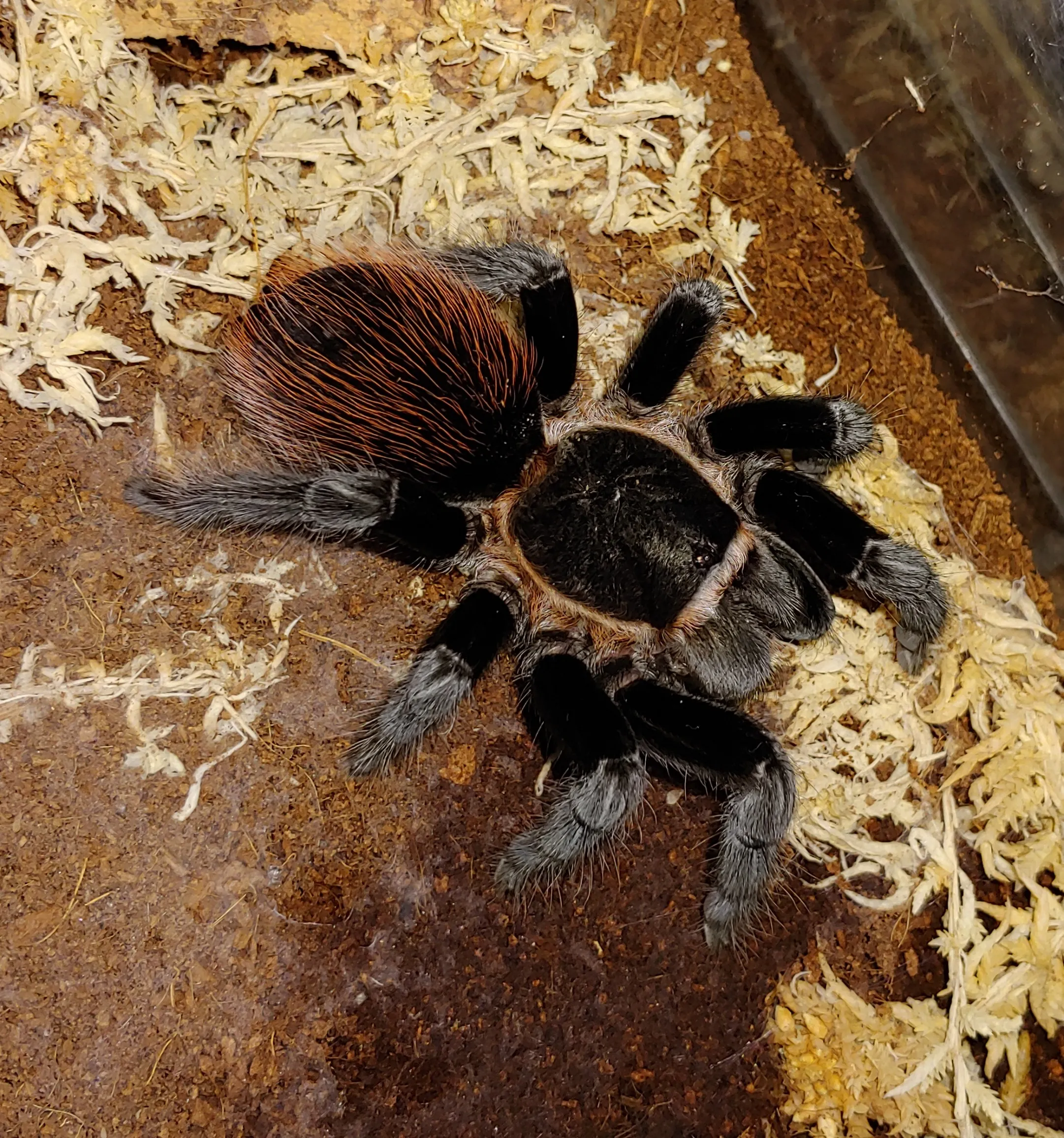
Creating the ideal habitat is crucial for the health and well-being of your B vagans tarantula. The enclosure should be appropriately sized, allowing for adequate space without being too large. A 10-gallon tank is often suitable for a juvenile, with larger enclosures needed as they grow. The habitat should provide a comfortable environment that mimics their natural habitat. This includes appropriate temperature, humidity, substrate, and hiding places. It is very important to consider that the enclosure should have a secure lid to prevent escapes, and the setup should provide both visual enrichment and physical safety for the tarantula. The proper habitat minimizes stress and promotes healthy growth and behaviors.
Substrate and Enclosure Setup
The substrate is the material that covers the bottom of the enclosure and is essential for providing a suitable environment for burrowing. A good substrate for a B vagans tarantula should consist of a mixture of materials that retain humidity while allowing the spider to dig. A mixture of peat moss, vermiculite, and a small amount of coco fiber works well. The substrate should be deep enough for the tarantula to burrow comfortably, usually 4-6 inches is recommended. The enclosure should also include a hide, such as a piece of cork bark or a half-log, where the tarantula can retreat to feel secure. Proper substrate maintenance, including keeping it slightly moist, is key to their well-being.
Temperature and Humidity Regulation
Maintaining the correct temperature and humidity levels is critical for the health of your B vagans tarantula. The ideal temperature range is between 75-85°F (24-29°C). A heat mat placed on the side of the enclosure can help maintain the correct temperature, but it is important to monitor the temperatures and humidity using a thermometer and hygrometer. Humidity should be maintained at around 60-70%. This can be achieved by lightly misting the enclosure with water once or twice a week. Proper ventilation is also important to prevent the build-up of excess moisture. These environmental parameters directly impact the tarantula’s health, molting, and overall well-being, underscoring the need to maintain consistent conditions.
Feeding and Hydration
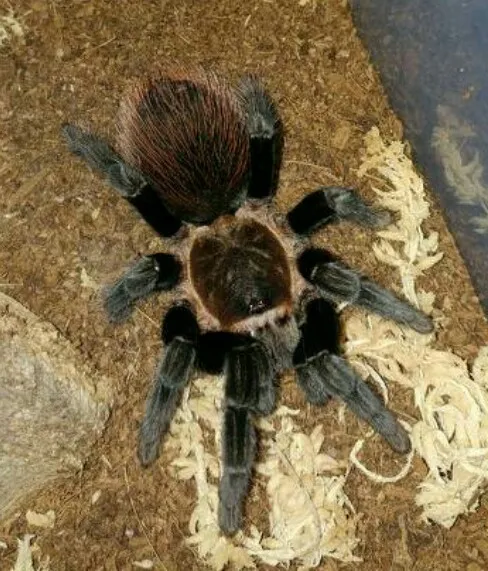
Proper feeding and hydration are essential elements of B vagans tarantula care. They should be fed a diet of insects, such as crickets, roaches, and mealworms. The size of the prey should be appropriate for the tarantula’s size, meaning the prey should not be larger than the spider’s body. A water dish should always be available. Water should be clean and readily available. The feeding frequency depends on the age and growth rate of the tarantula, with juveniles typically needing to be fed more frequently. Overfeeding should be avoided. Proper nutrition is vital for healthy growth, molting, and overall vitality. Regularly monitoring the tarantula’s eating habits and body condition is important to ensure they are receiving adequate nutrition.
Feeding Frequency and Food Types
The feeding frequency for a B vagans tarantula will depend on its age and size. Spiderlings and juveniles require more frequent feeding, generally every 2-3 days. Adults can be fed less frequently, approximately once or twice a week. The type of food offered should include a variety of insects to ensure a balanced diet. Crickets and roaches are good staples, while mealworms and other commercially available feeder insects can be used for variety. The insects should be gut-loaded with nutritious food before being offered to the tarantula, ensuring that the tarantula gets the best nutrients. Remove any uneaten prey after 24 hours to prevent stress and mites from developing. Overfeeding can lead to health issues.
Watering and Humidity
Providing access to fresh water and maintaining proper humidity levels are vital for the health of your B vagans tarantula. A shallow water dish should always be available for the tarantula to drink from. The water dish should be kept clean and refilled regularly with fresh water. Humidity can be maintained by lightly misting the enclosure with water once or twice a week, depending on the environmental conditions. Avoid over-misting, as this can lead to excessive humidity, which can cause health problems. Monitoring the humidity level with a hygrometer is recommended. Providing proper hydration and managing humidity is essential for molting and overall health, ensuring the spider remains comfortable and well.
Health and Common Issues
Identifying and Preventing Diseases
B vagans tarantulas are generally hardy, but they can be susceptible to certain health issues. Identifying and preventing diseases involves vigilant observation and proactive care. Common issues include mites, fungal infections, and dehydration. Mites can be introduced through contaminated substrate or food. Fungal infections can arise from excessive humidity and poor ventilation. Dehydration occurs when the tarantula does not have adequate access to water or the humidity is too low. Regularly inspect the tarantula and its enclosure for any signs of disease, such as unusual behavior, loss of appetite, or physical abnormalities. Ensure a clean enclosure, proper ventilation, and appropriate humidity levels to prevent these problems.
Handling and Safety Tips
While B vagans tarantulas are generally docile, it is essential to handle them with caution and respect. Avoid unnecessary handling, as it can stress the tarantula. If handling is required, do so close to the ground or over a soft surface in case of a fall. Be aware of the urticating hairs, which can cause skin irritation. Wash your hands thoroughly after handling the tarantula or working in its enclosure. Use tools like long forceps to move the tarantula within its enclosure or to remove uneaten food. If bitten, clean the area immediately and seek medical attention if necessary. Be patient, and don’t handle a tarantula that appears stressed. These safety practices ensure the well-being of the tarantula and the keeper.
Conclusion
The B vagans tarantula is a captivating species, admired for its beauty and relatively easy care. Understanding their habits, providing them with the correct habitat, and taking the right steps to ensure their health, will enable owners to enjoy these unique creatures. They are a fantastic choice for beginners looking to explore the world of tarantulas, offering a fascinating and rewarding pet-keeping experience. Always conduct thorough research and take the time to learn how to best care for your new pet. By following the guidelines and keeping up with best practices, you will provide your tarantula with a happy and long life. Appreciating the unique qualities of the B vagans will surely keep you intrigued.
